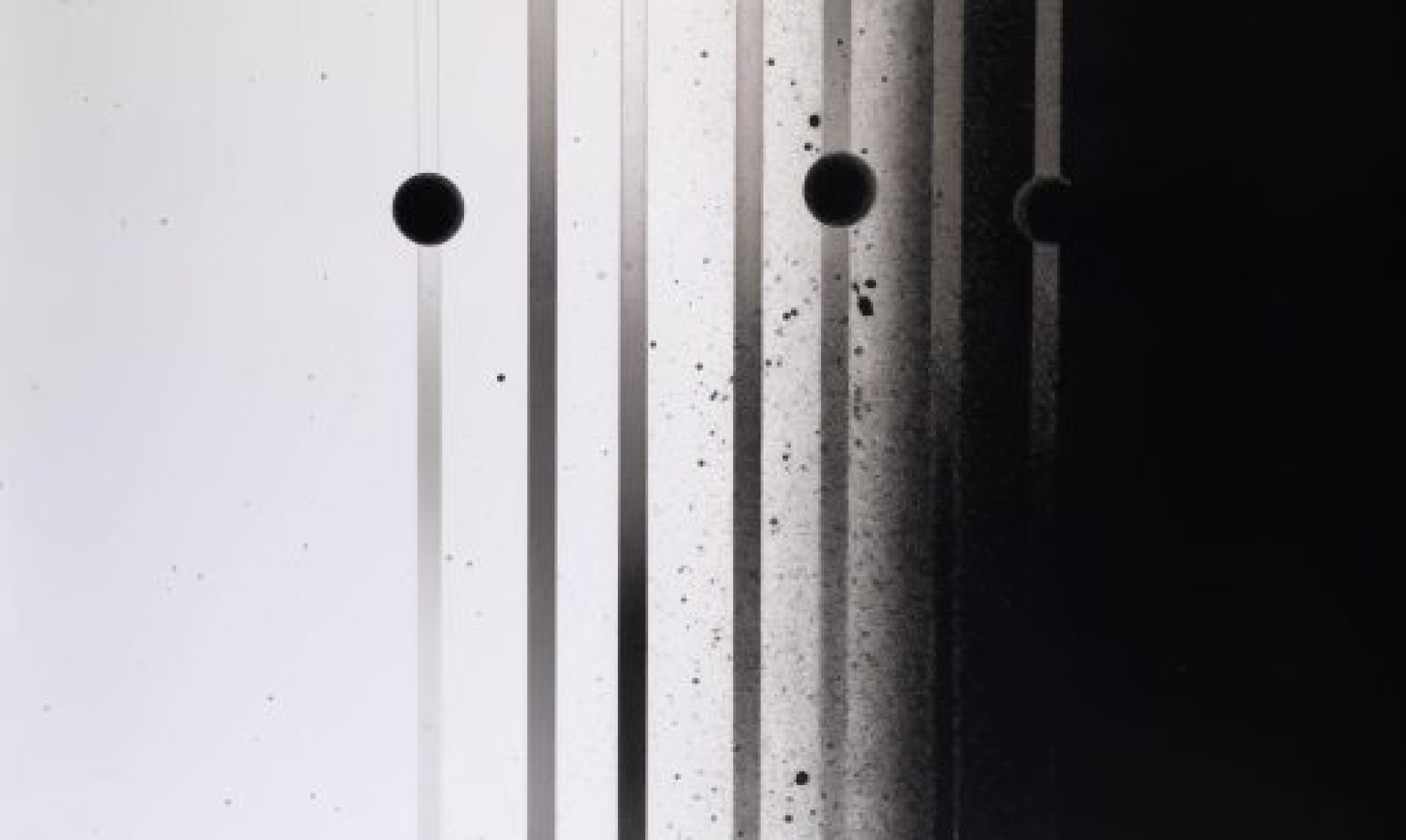 Mark Fell’s “Tone Pattern Transactuality”; photo by Jonathan Newton/The Washington Post
Mark Fell’s “Tone Pattern Transactuality”; photo by Jonathan Newton/The Washington Post
Artisphere show delivers an eyeful and an earful
By Michael O’Sullivan
Friday, Oct. 7, 2011
When I showed up at Artisphere to check out “Data/Fields,” a five-artist showcase of new-media art, I encountered a tour for staffers who might need to know what to do should one of the high-tech pieces in the show burn out, blow up or otherwise need to be rebooted. It’s an occupational hazard for today’s plugged-in artist, whose work occasionally requires adjustments more complicated than straightening a painting on the wall.
Fortunately, everything in the show was humming and clicking as designed.
“Data/Fields” is a sharply installed and smartly edited mini-survey of cutting-edge contemporary art, selected and curated by Richard Chartier, a Washington-based sound artist whose work was featured in the 2002 Whitney Biennial. Incorporating sound, light, drawing and, to some degree, a sculptural component – as well as various combinations of those things – the show isn’t just something you look at or listen to, but rather a little of both. As one of the wall labels puts it, you’re not just a viewer here, but a percipient.
The show demands – and rewards – close attention.
In the center of the darkened gallery is the show’s strongest piece, a computer-generated “painting” of sorts called “Tone Pattern Transactuality.” The Rothko-like video projection, by British artist Mark Fell, is constantly changing colors, sometimes subtly, sometimes abruptly, like some Brookstone gizmo that tracks the stock market by changing from, say, pink to blue. It’s accompanied by an audio track you listen to with headphones. The sound ranges from a quiet hum to what seems like a phaser on overload. It’s intense and, at times, scary. You don’t take it in; it takes you in.
Less frightening, yet more interactive, is Caleb Coppock’s “Graphite Sequencer.” The Nebraska-based artist has customized an old turntable to “play” his own abstract pencil drawings, 48 of which hang on the wall. Take one down and place it on the turntable; the size and shape of vinyl LPs, they’ve all got holes in the middle.
Graphite, you see, conducts electricity. So as you watch the drawings spin, electrical contacts on the tone arm – which replaces the traditional needle – create a music of staticky clicks, like Morse code. It’s cool, though it lacks the emotionally enveloping quality of Fell’s work.
Around the corner you’ll find Japanese artist Ryoji Ikeda’s mesmerizing “Data.scan,” consisting of a computer monitor set into a console about the size of a Pac Man machine and accompanied by an electronic score that seems to emanate from everywhere – and nowhere. The speakers are very well hidden.
On the screen, the images alternate, rapidly, between data based on star-mapping – you’ll spot the name Alpha Persei, and others, if you look hard enough – and television static. But look more closely. That static is actually a screen full of apparently meaningless numbers. Ikeda pulls off an effective, and surprisingly compelling, tension between the cosmic and the everyday. Whose head isn’t filled with phone numbers, passwords and other ID codes these days?
Ikeda’s score is so pervasive – it’s the one bit of sound art in the show that you don’t need headphones for – that it spills over into Andy Graydon’s nearby sculptural installation, “Untitled [band pass Arlington].” That Berlin-based artist’s work is just a pile of rubble on the floor. But periodically, a bright, thin band of light, cast by a motorized projector mounted on the ceiling, sweeps over its rugged surface, illuminating its peaks and valleys slowly, like a scanner. Along with Ikeda’s borrowed soundtrack of spaced-out beeps, the work invites extended looking – and listening – for previously hidden details.
Taken together, the works in “Data/Fields” sharpen your senses, even as they blur the boundary between sight and sound.
The story behind ‘Entre-Deux’
You can’t see France Jobin’s contribution to “Data/Fields.”
“Entre-Deux” (“Between Two” in French) is a sound installation, created specifically for Artisphere’s outdoor terrace and pumped through three sets of stereo speakers mounted along the wall. A fractured sonic collage created from recordings made by the Montreal-based sound artist at Artisphere and elsewhere, the piece includes the noise of airplanes flying to and from nearby Reagan National Airport as well as the gurgle of rainwater running into the terrace level’s drains. (Jobin was there with her recorder on a rainy day.)
The recorded sounds mix with the real ones, tricking the ear in a delightful way. The best time to visit, according to gallery director Cynthia Connolly, is at dusk, when street noise quiets down and you can look across Wilson Boulevard to see computer monitors twinkling in the windows of office buildings just across the street.
Come to think of it, maybe “Entre-Deux” does have a visual component after all.
— Michael O’Sullivan (Friday, Oct. 7, 2011)
